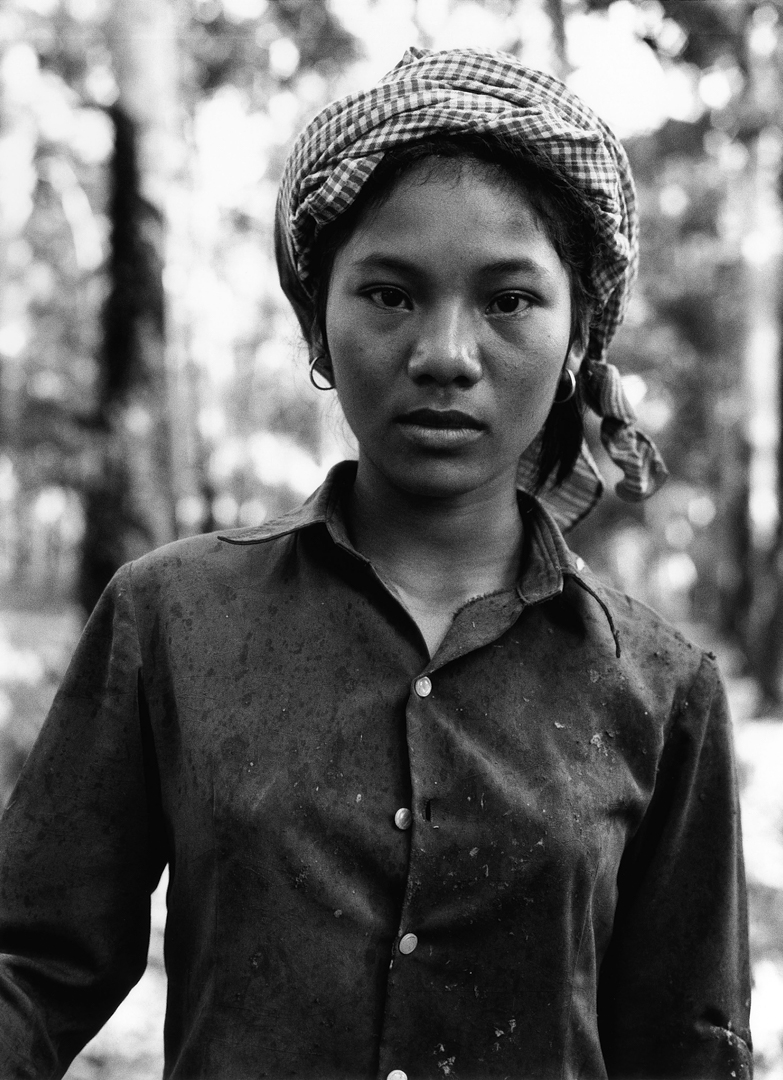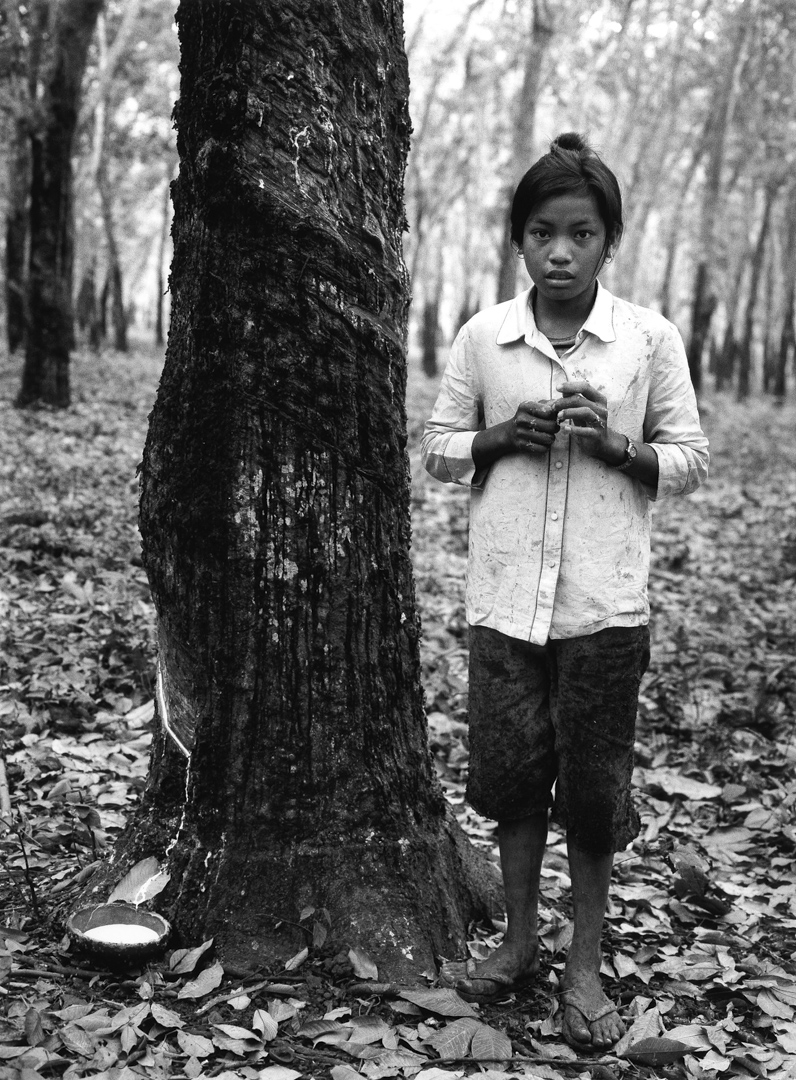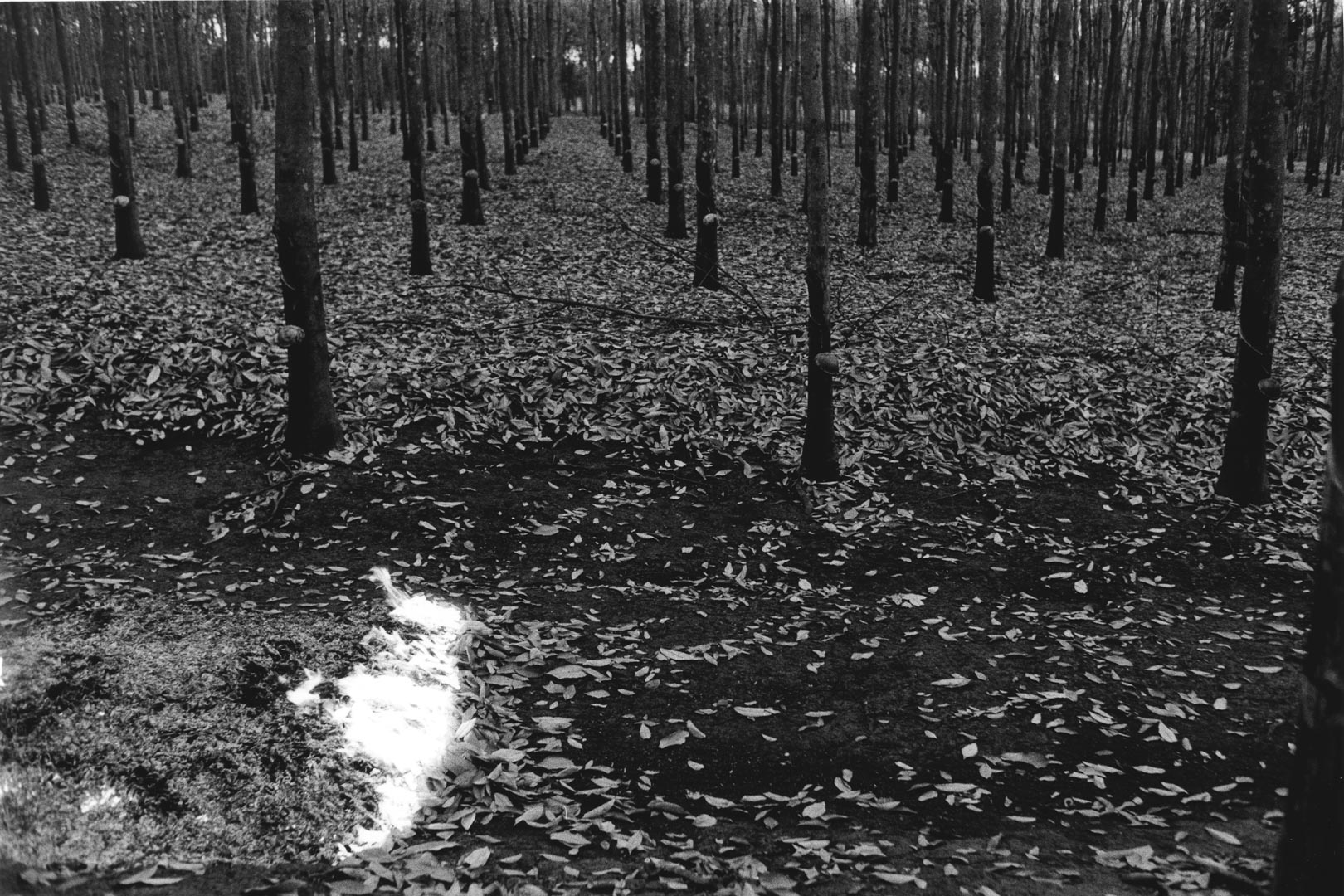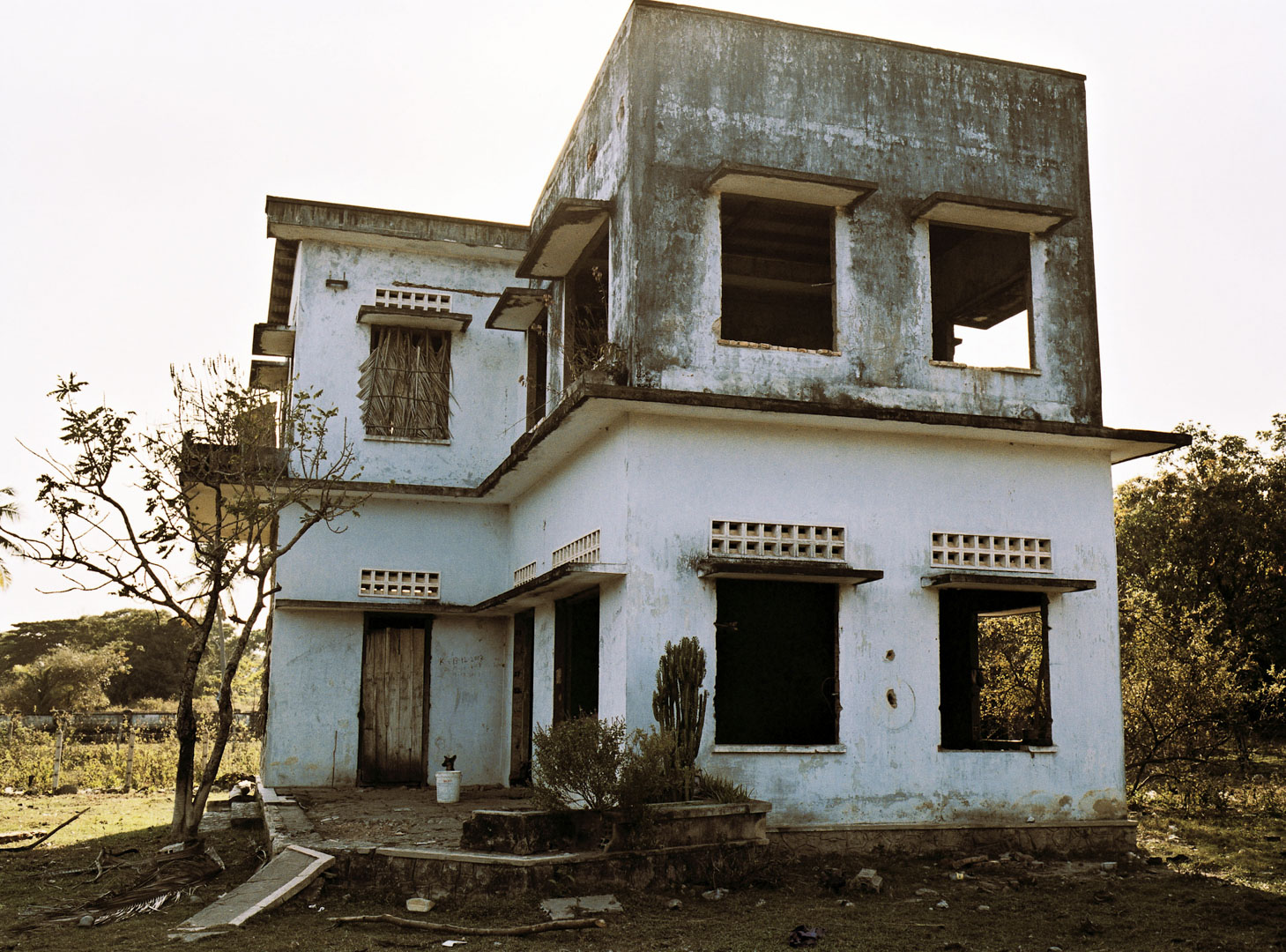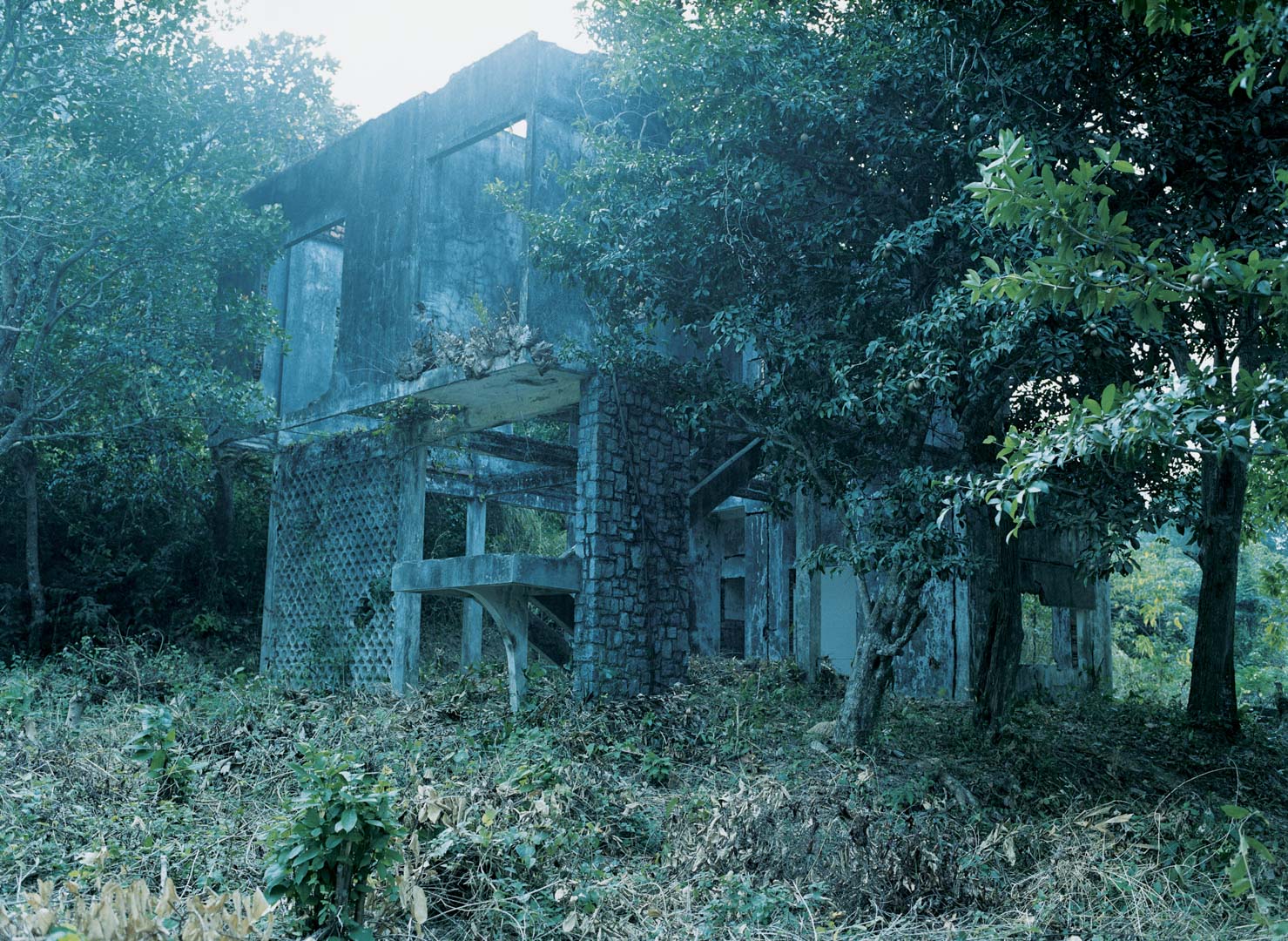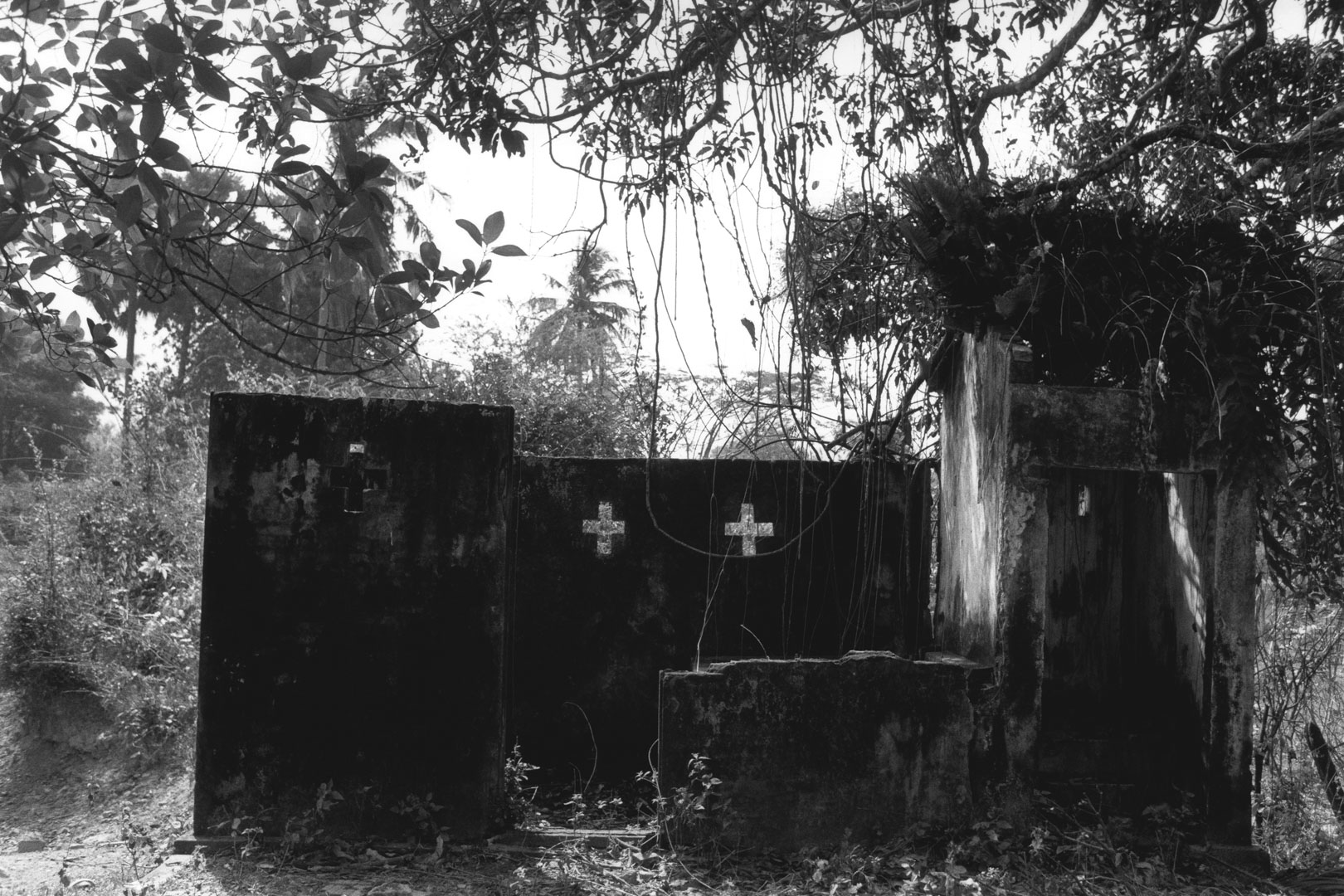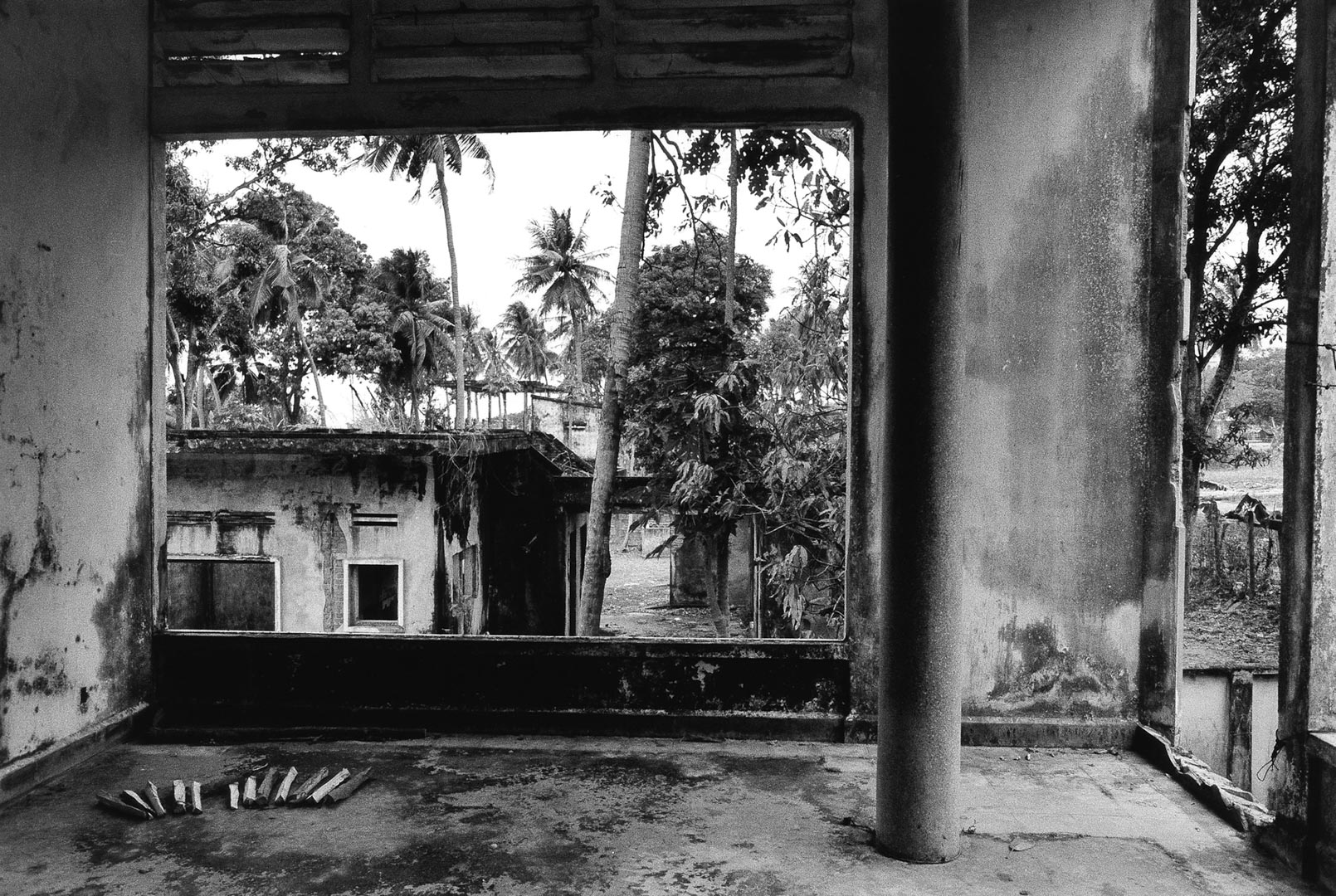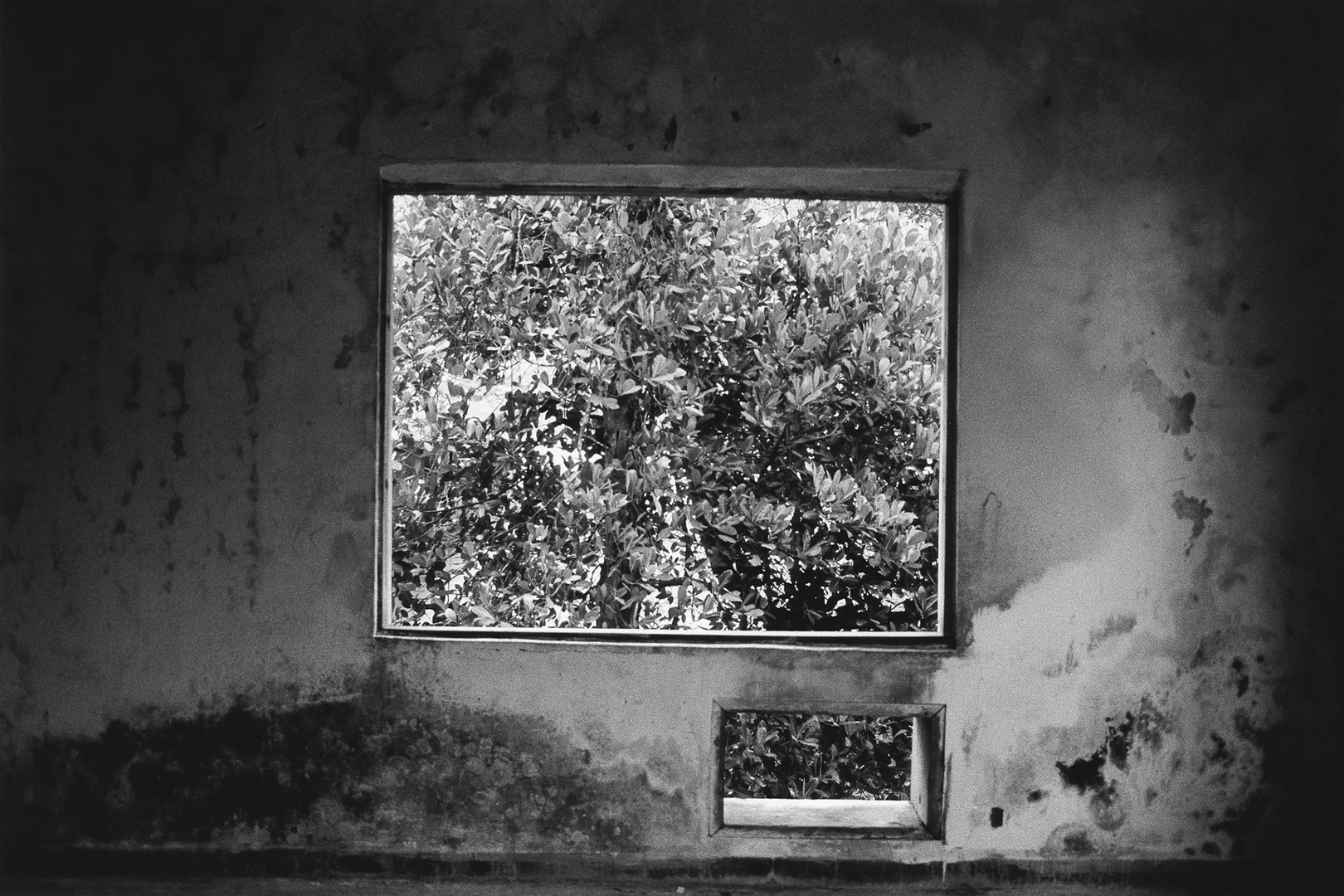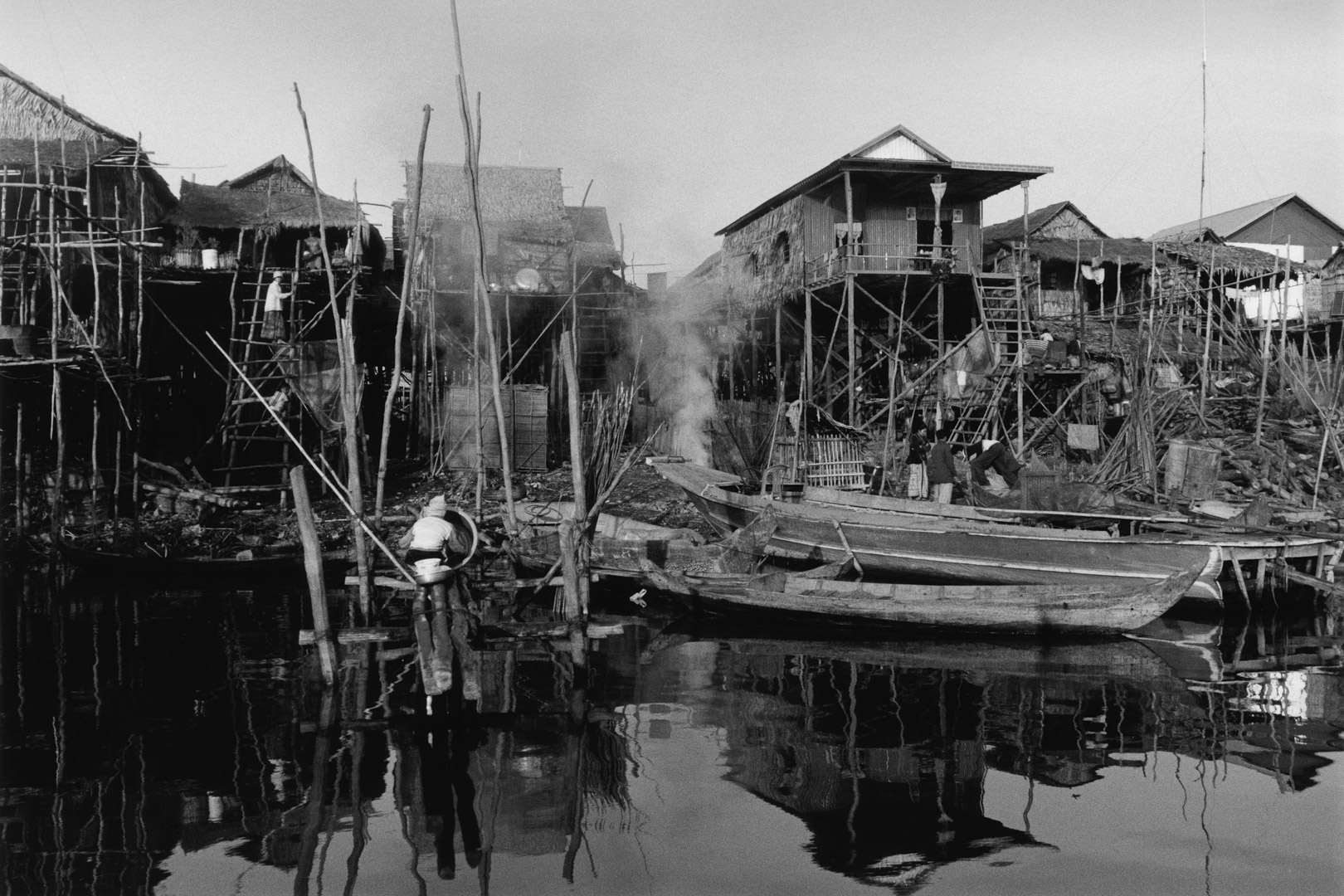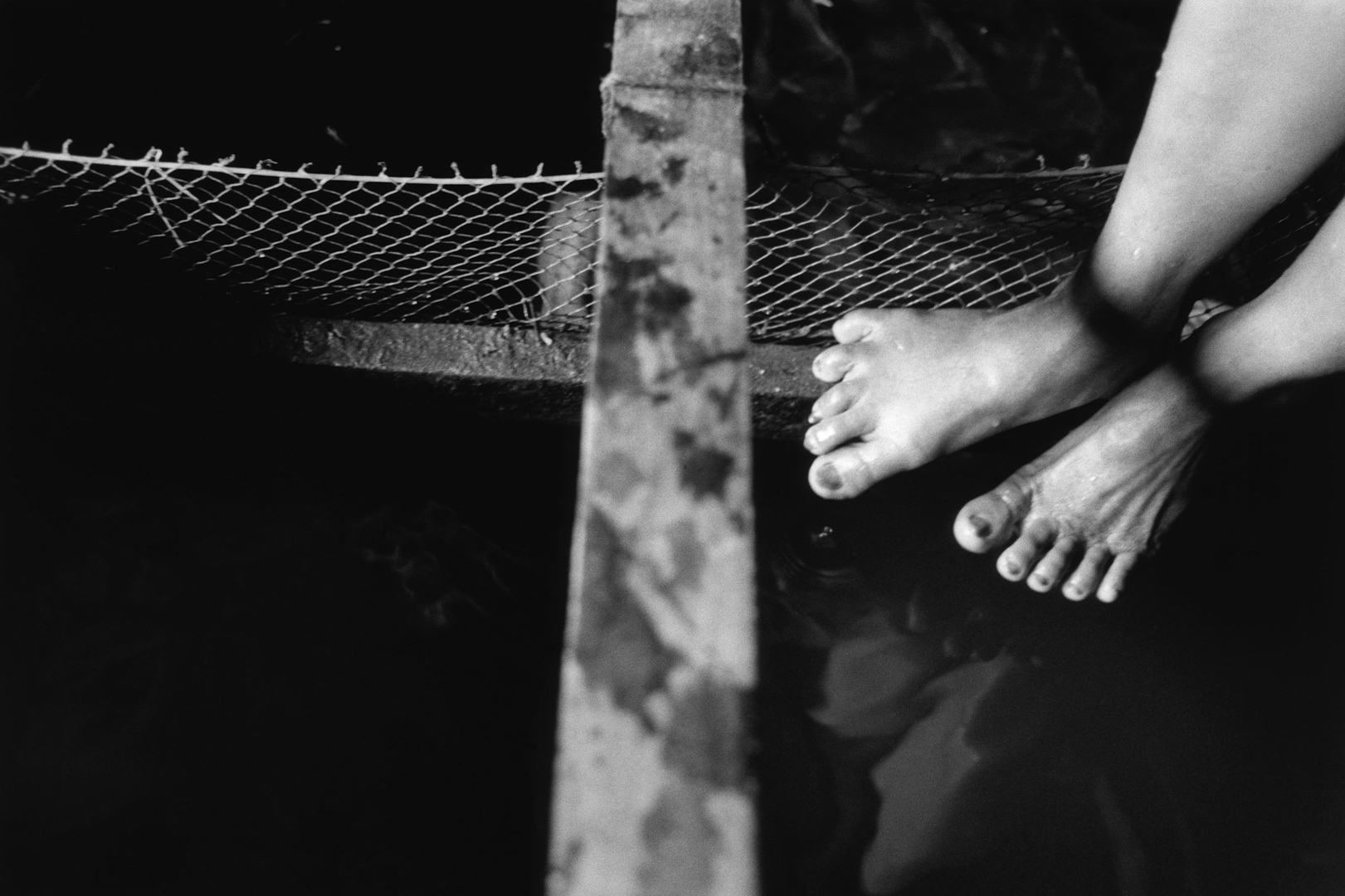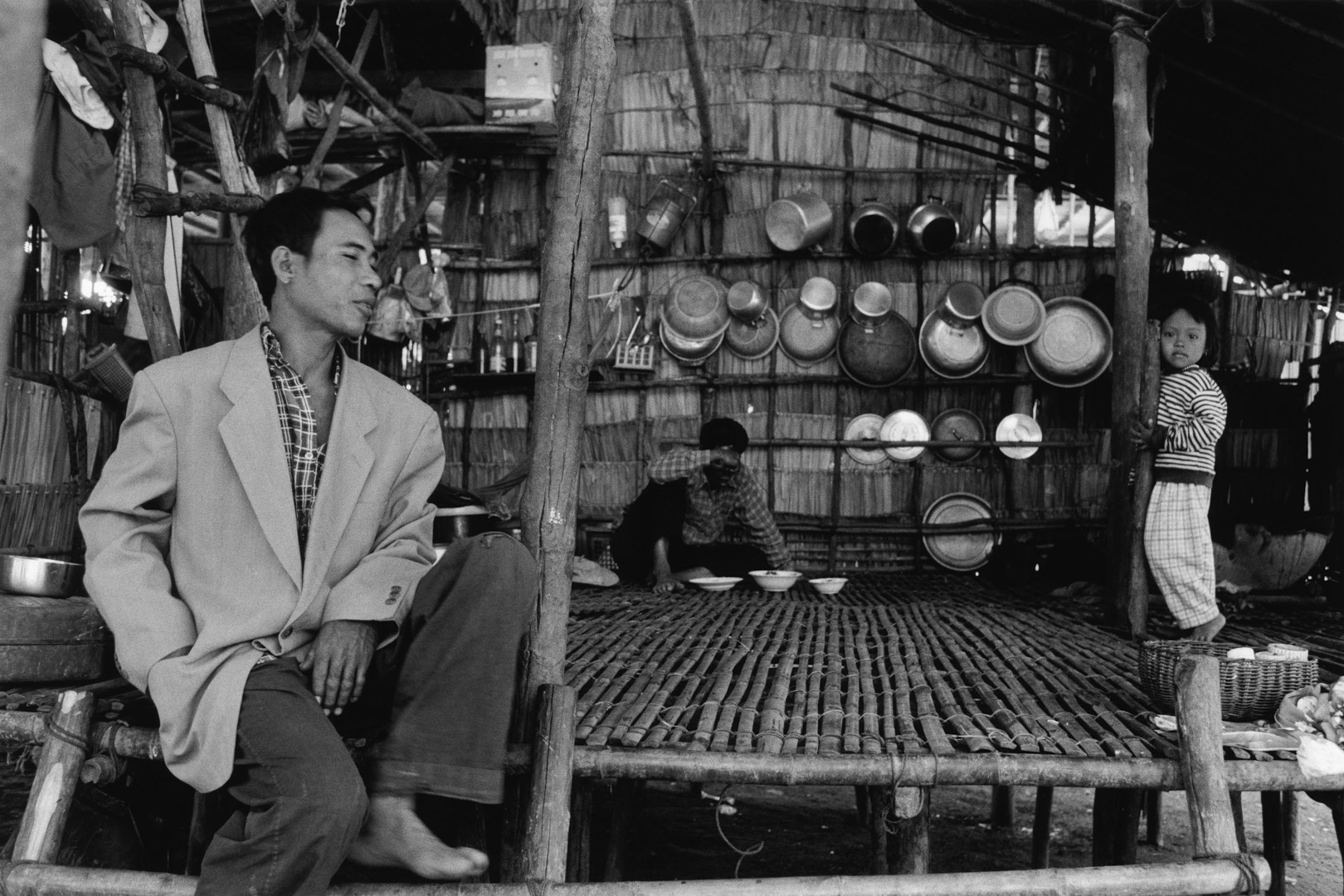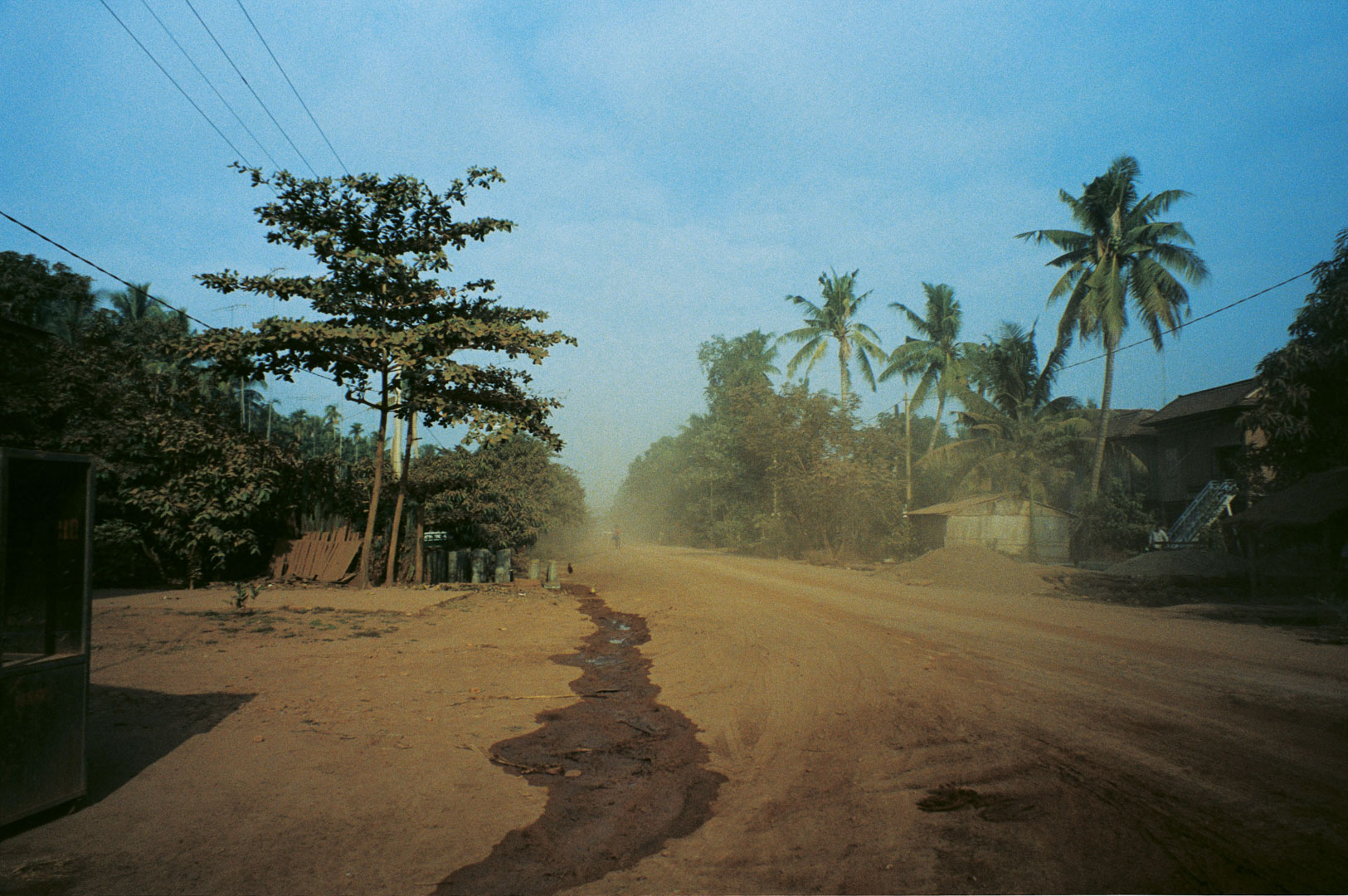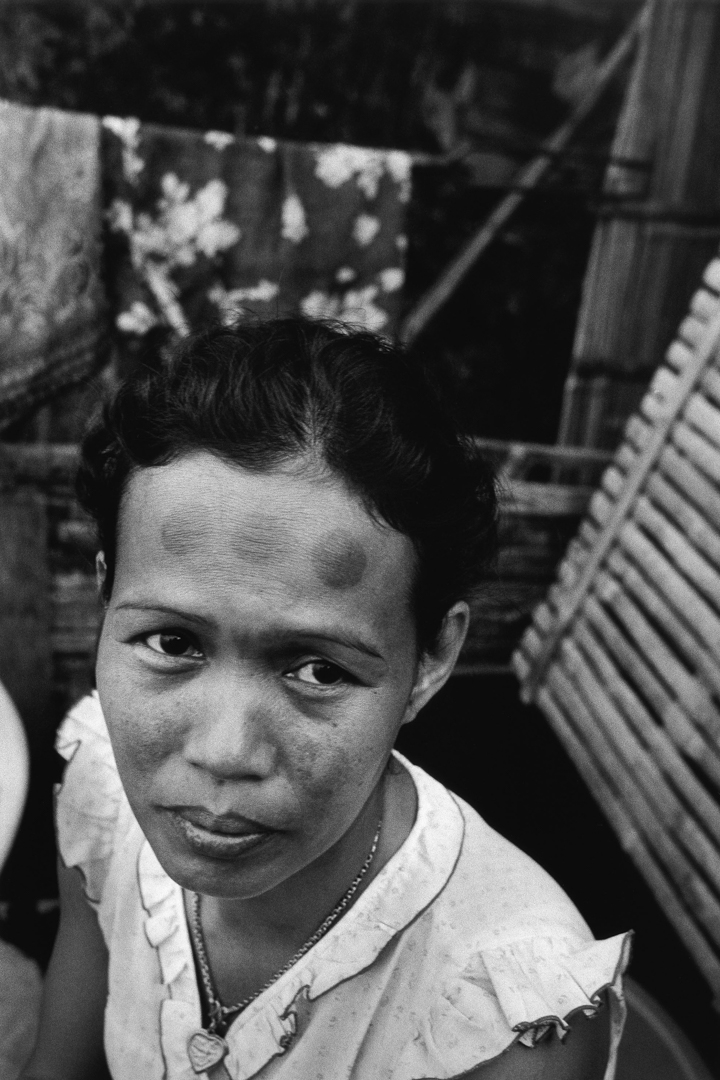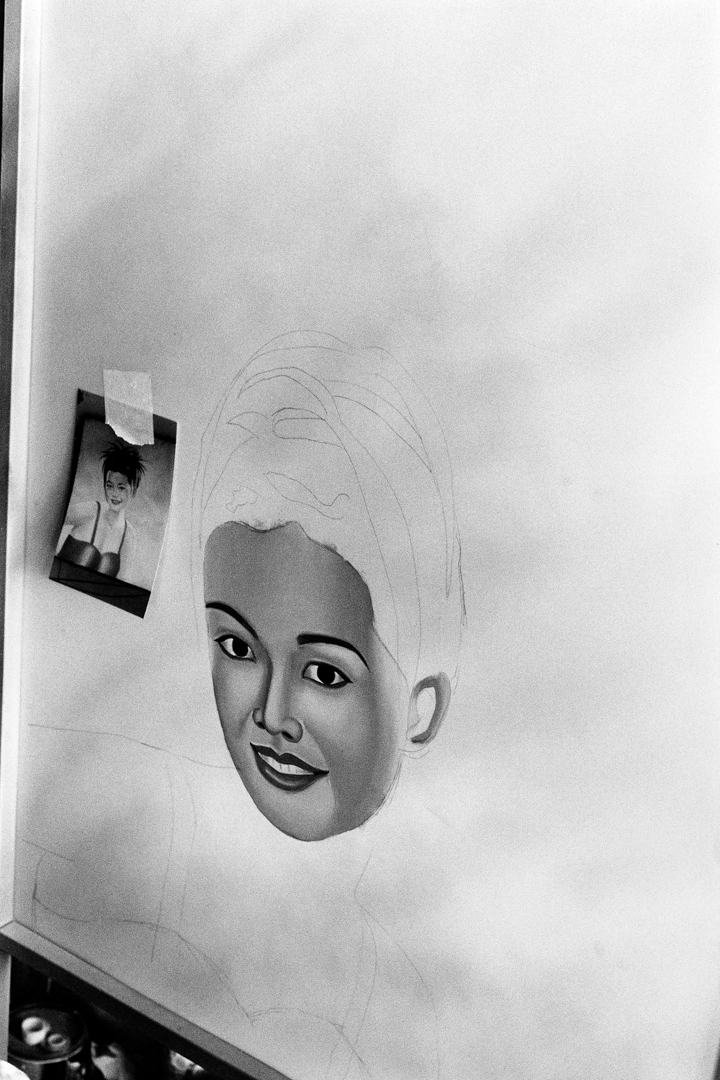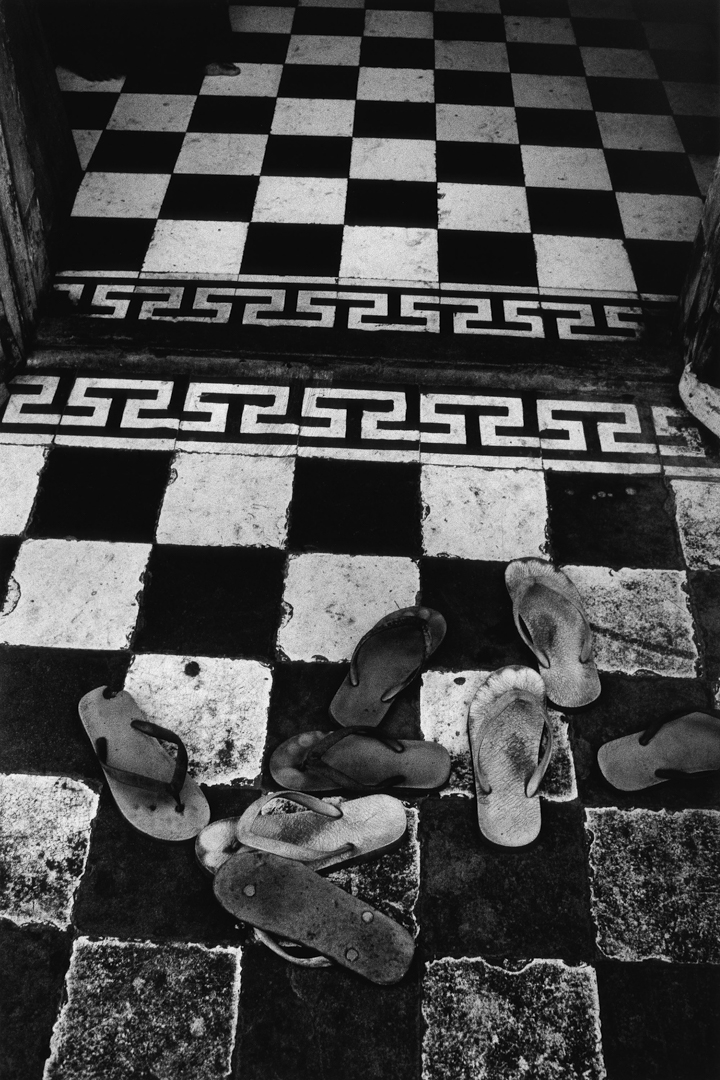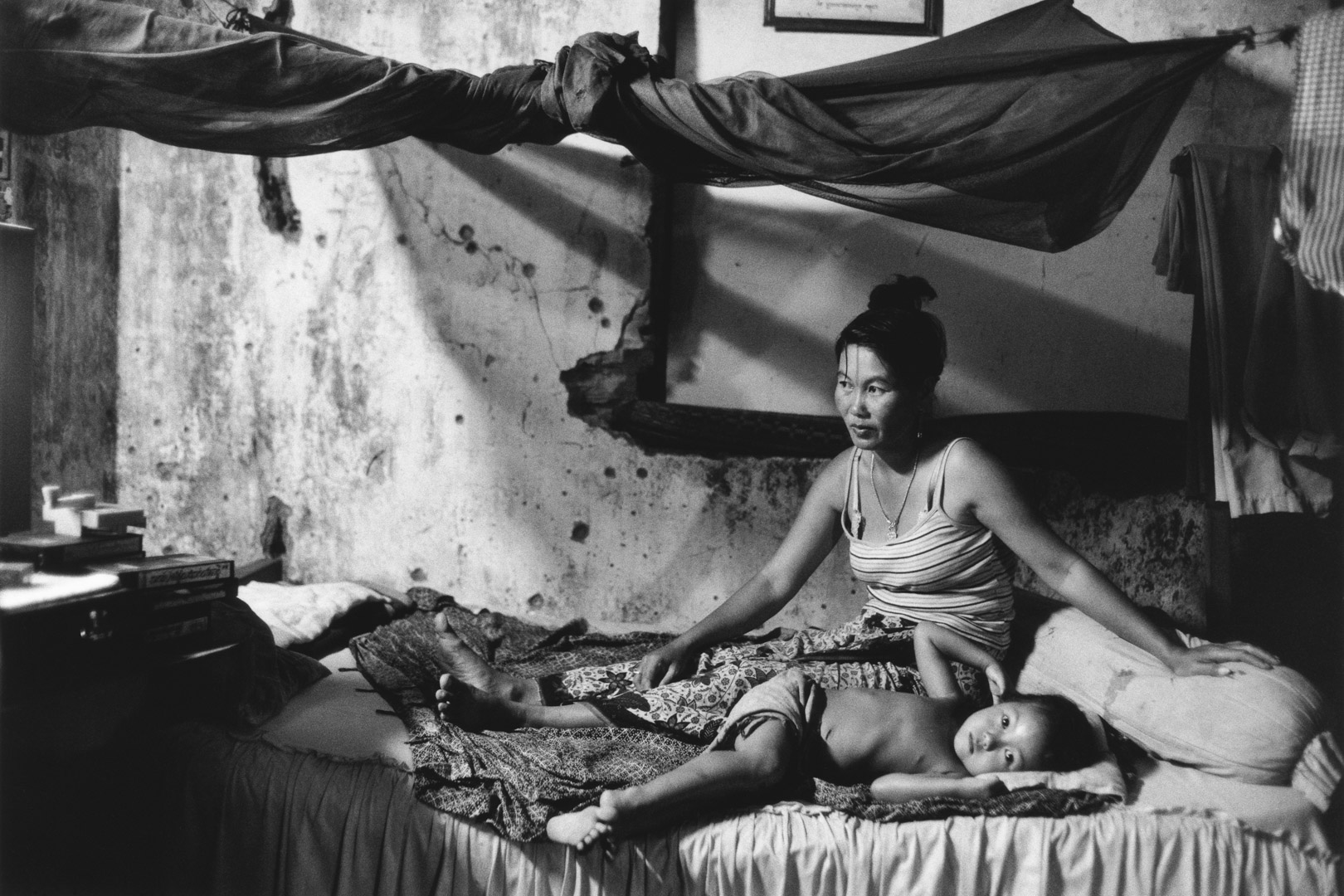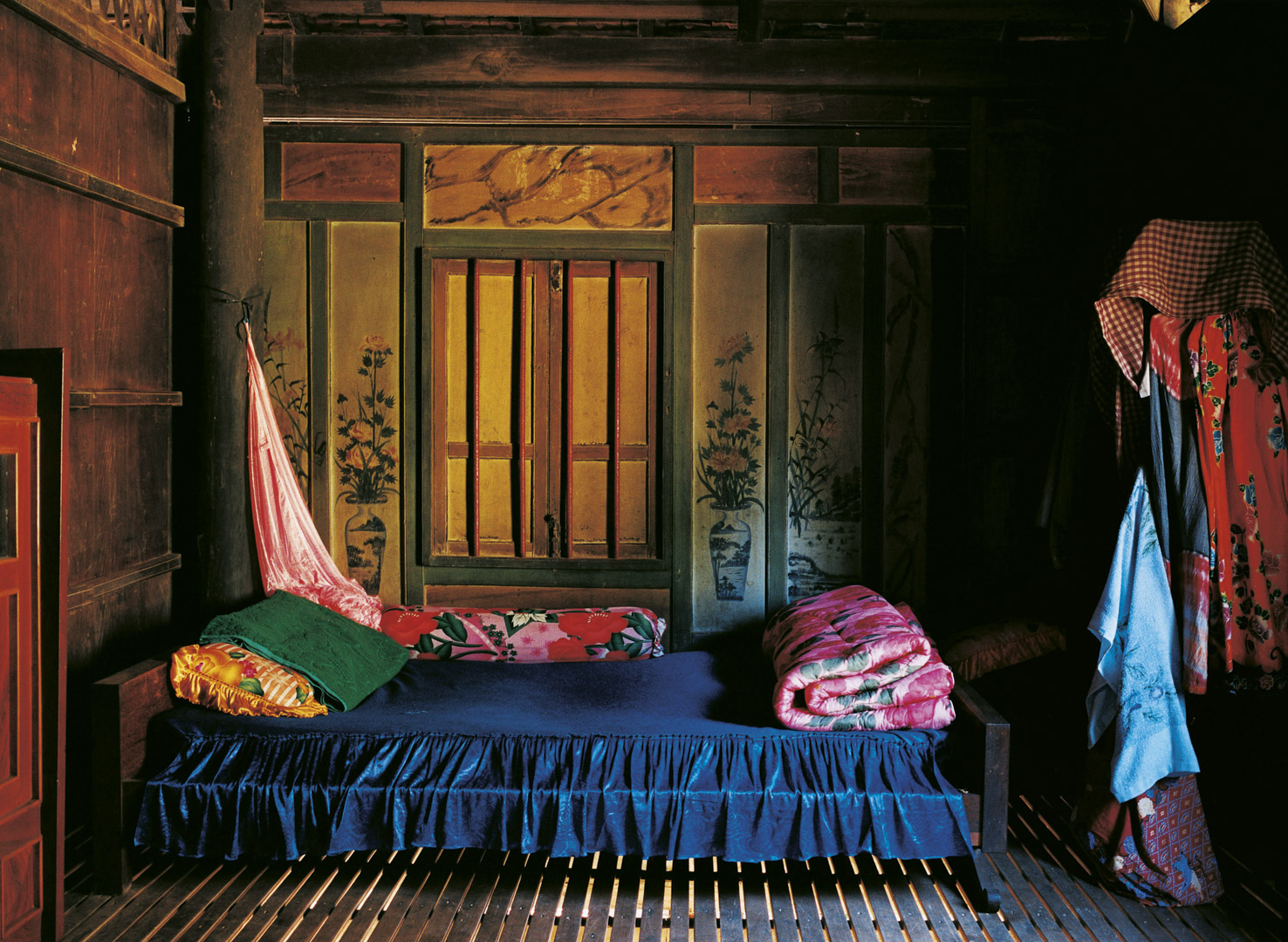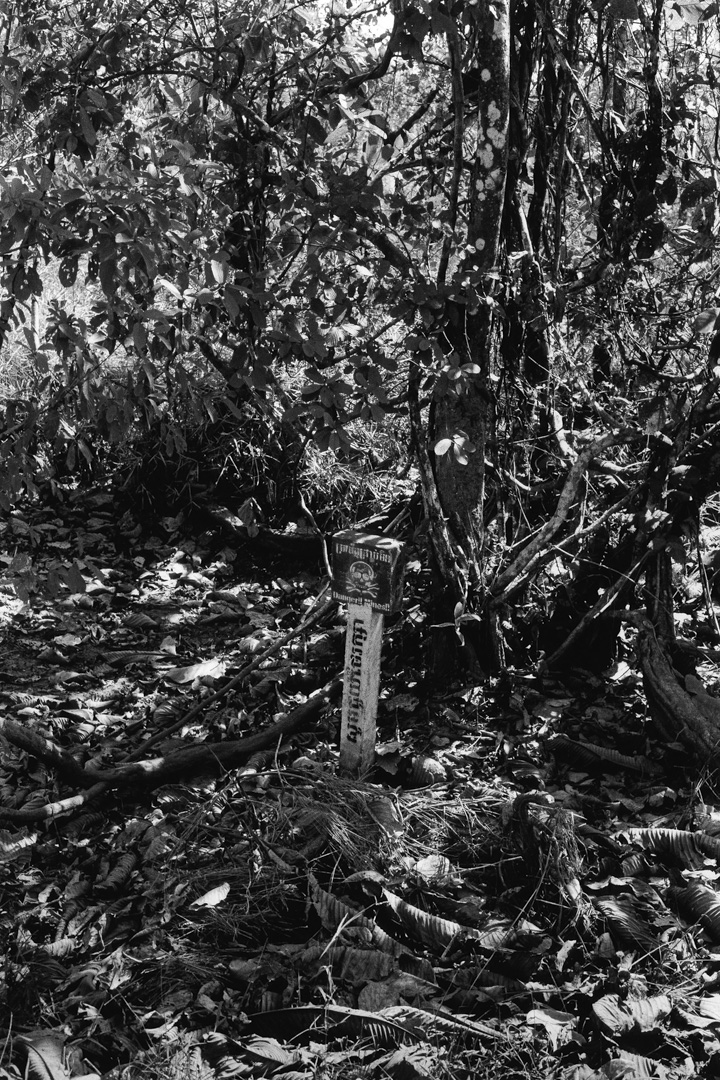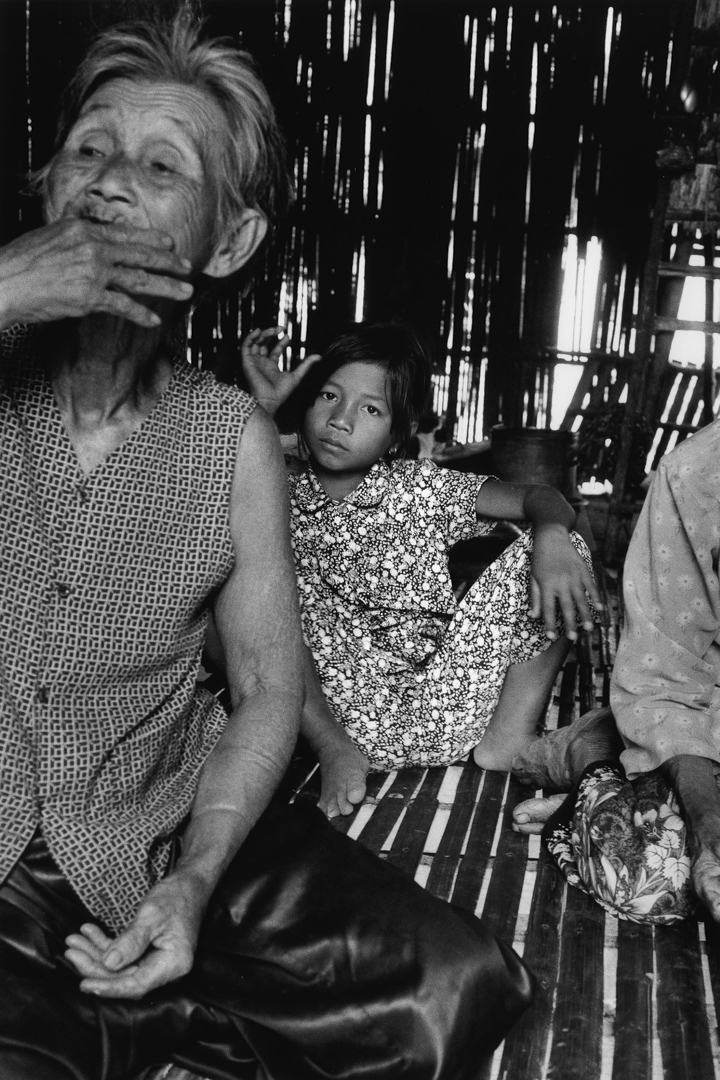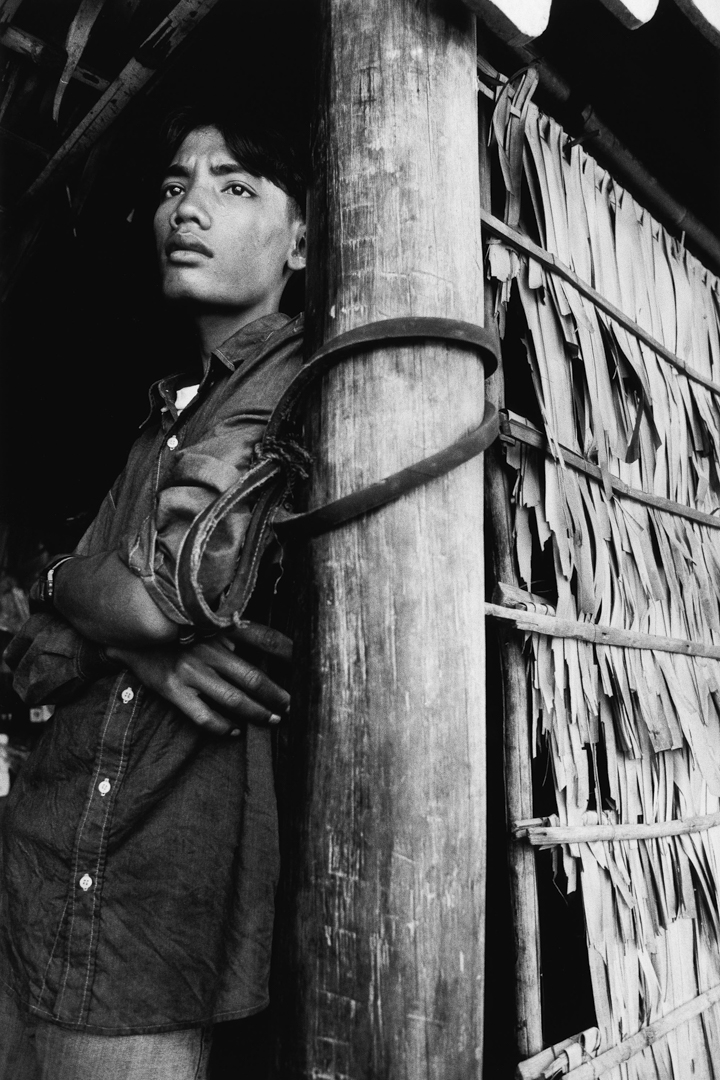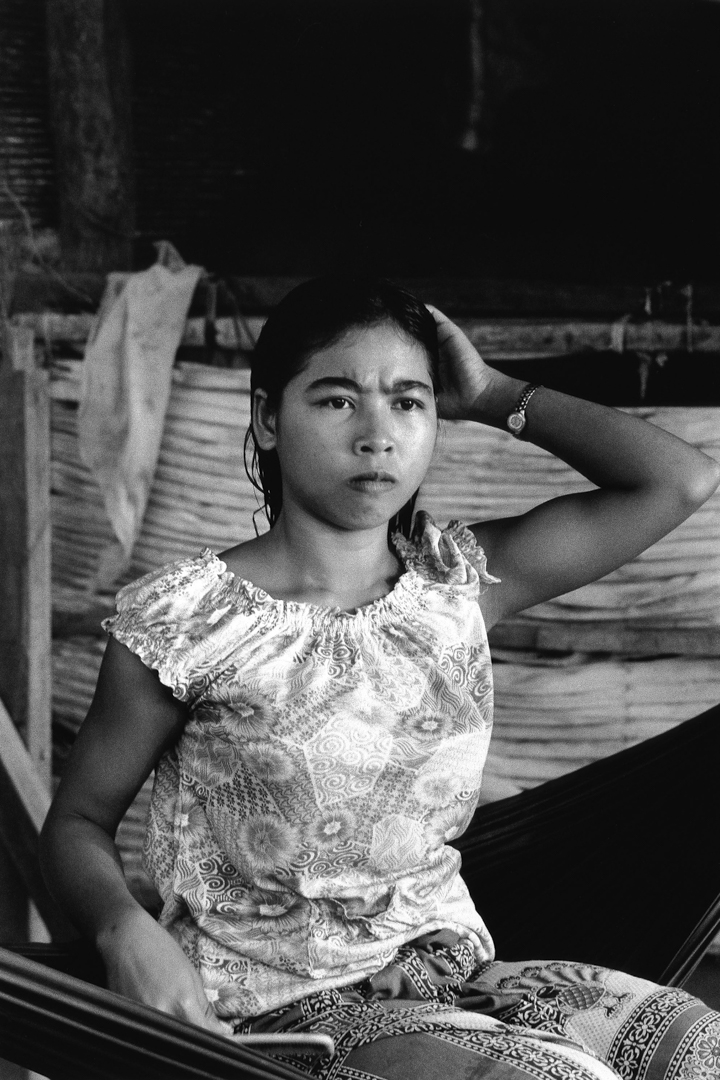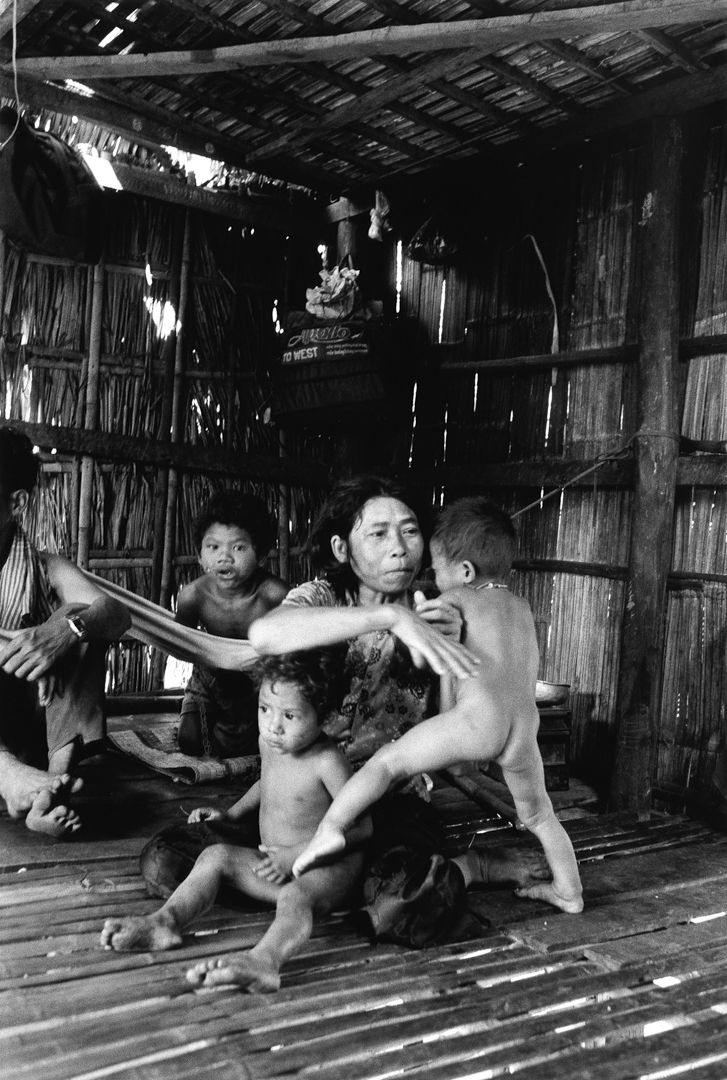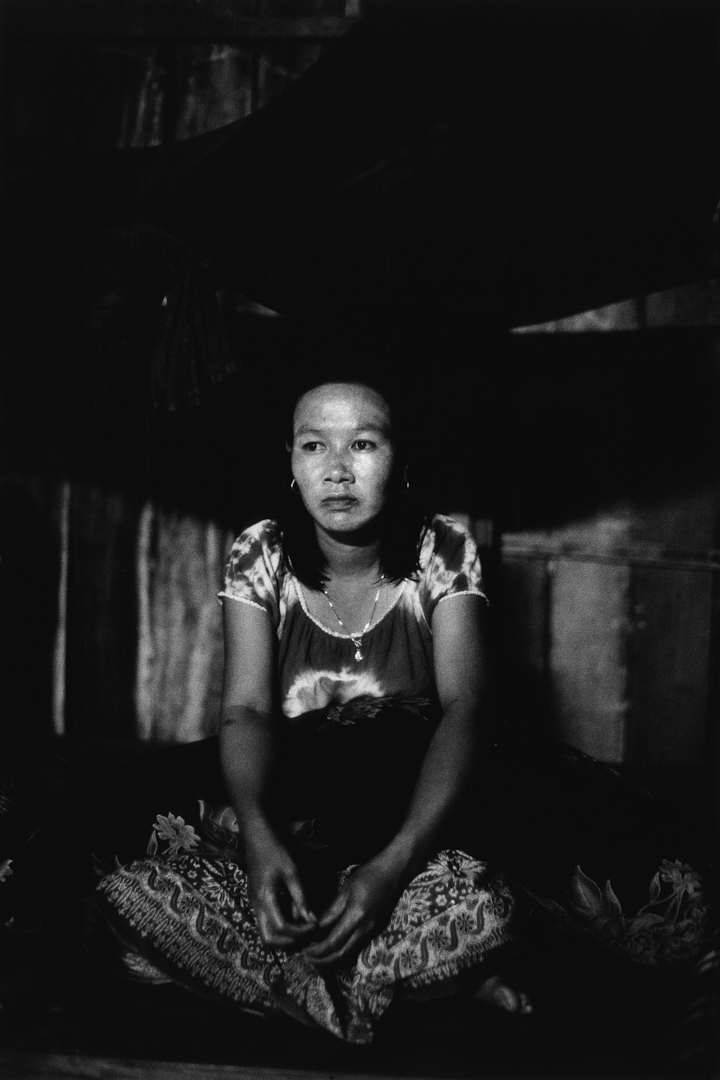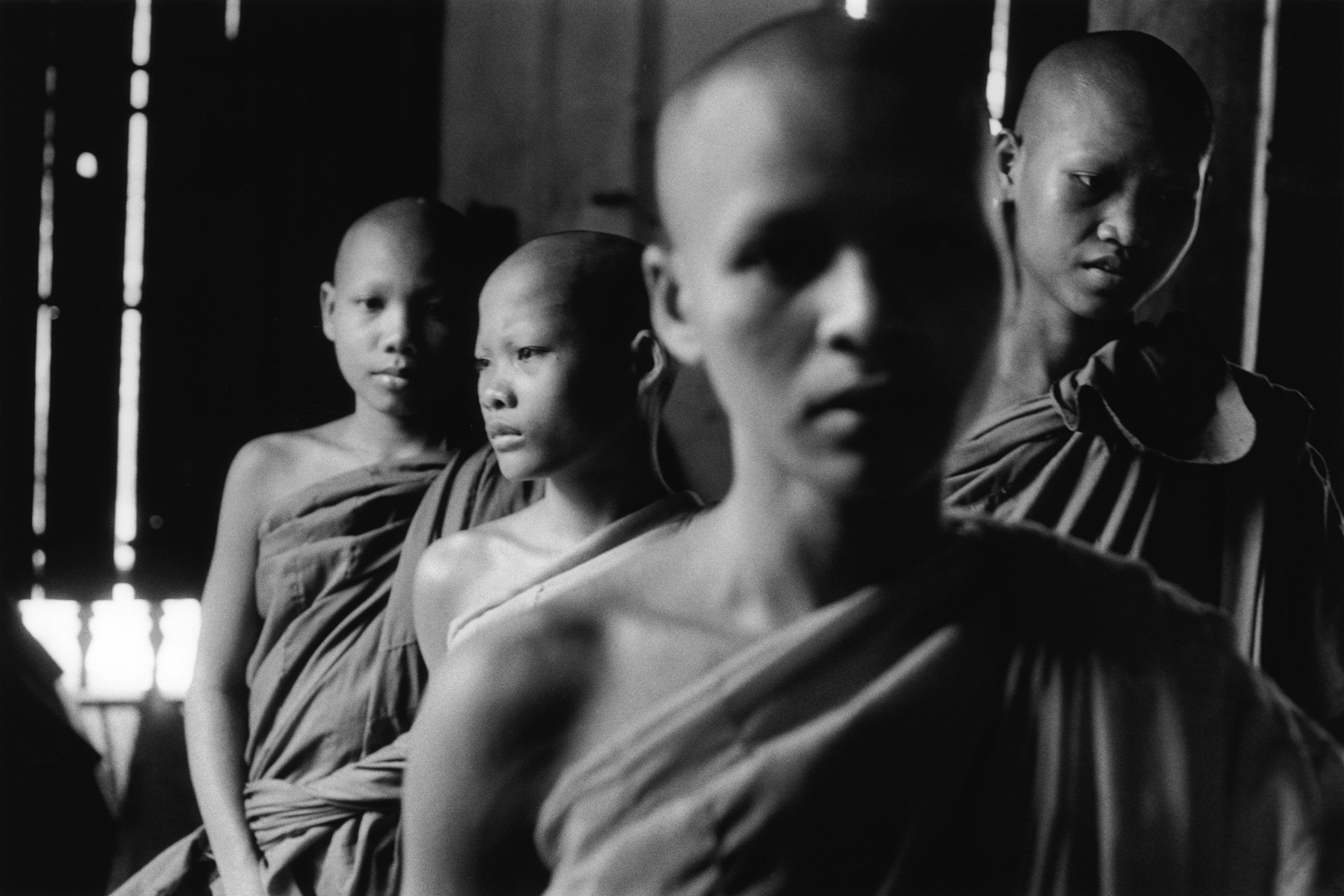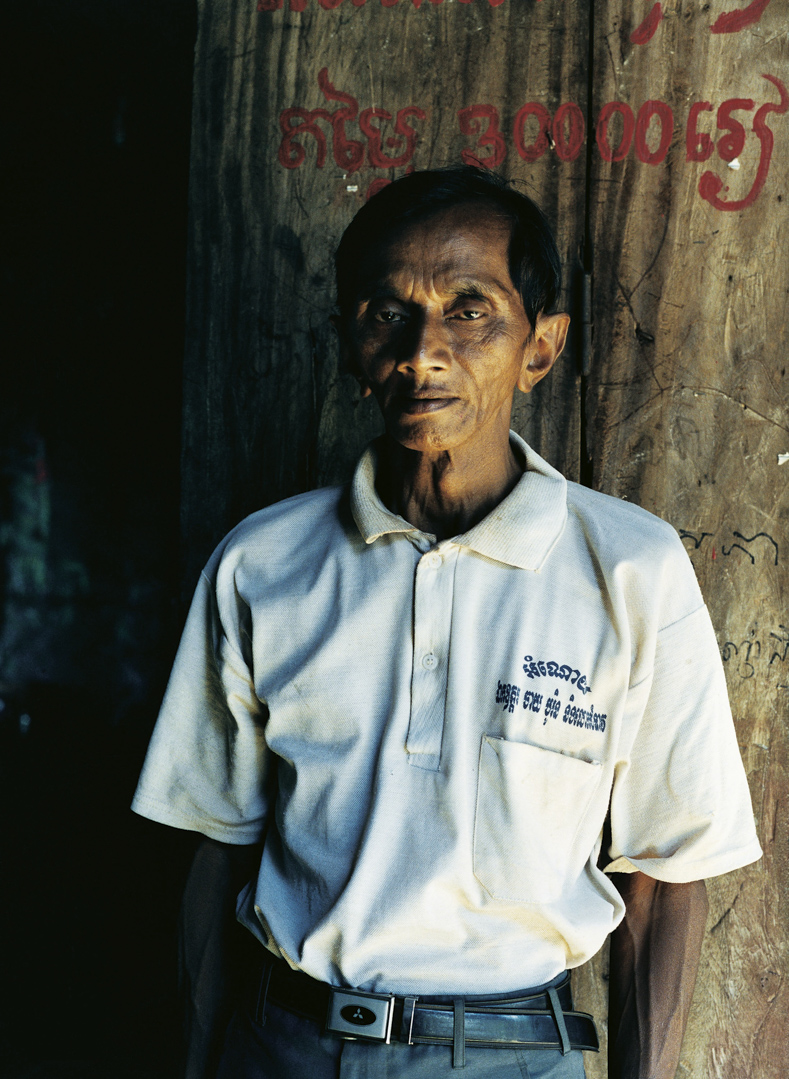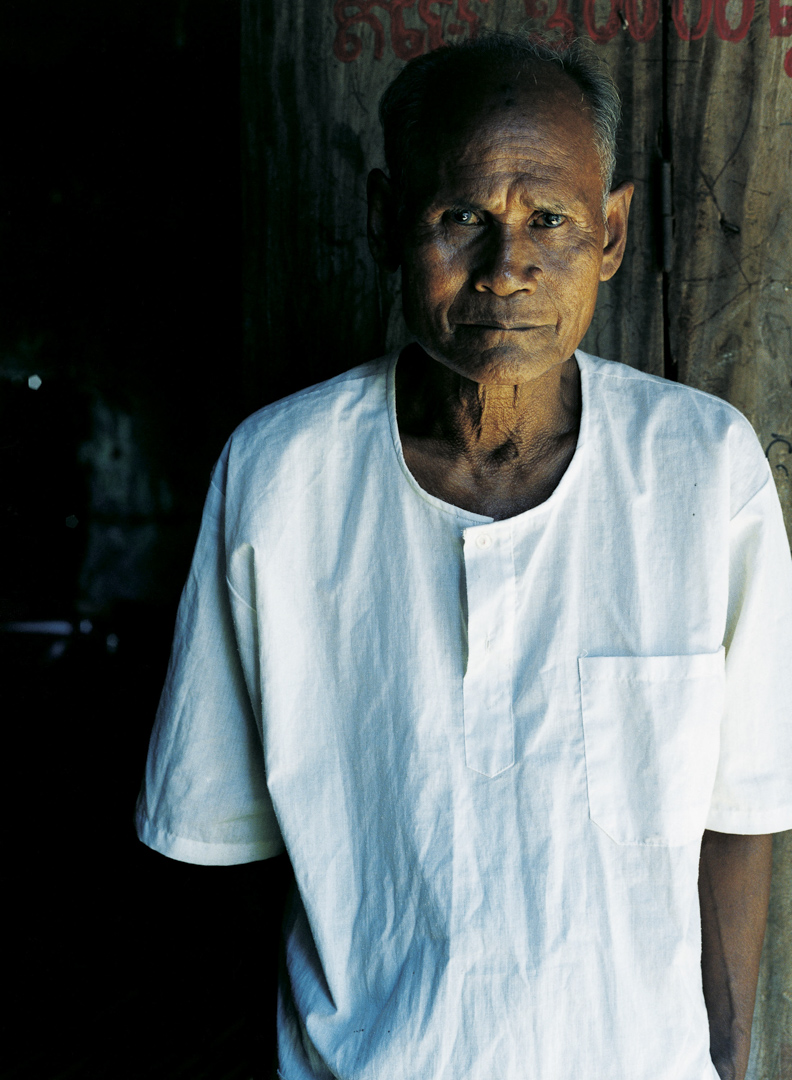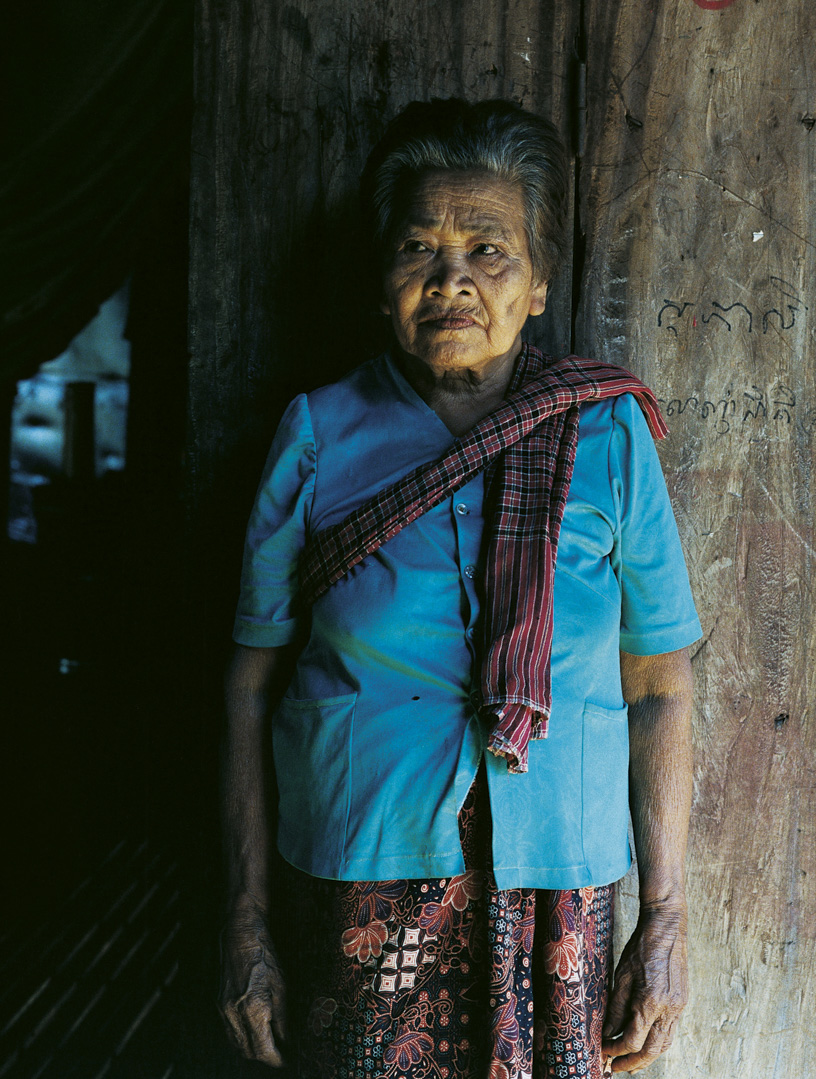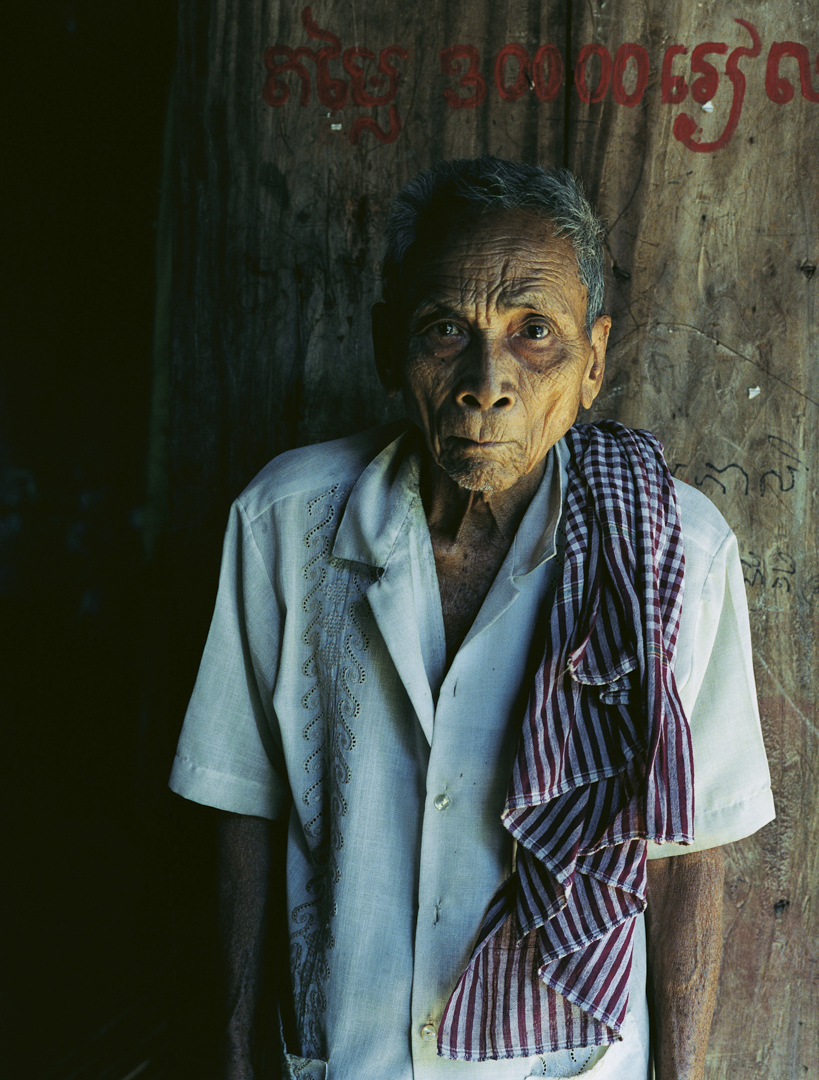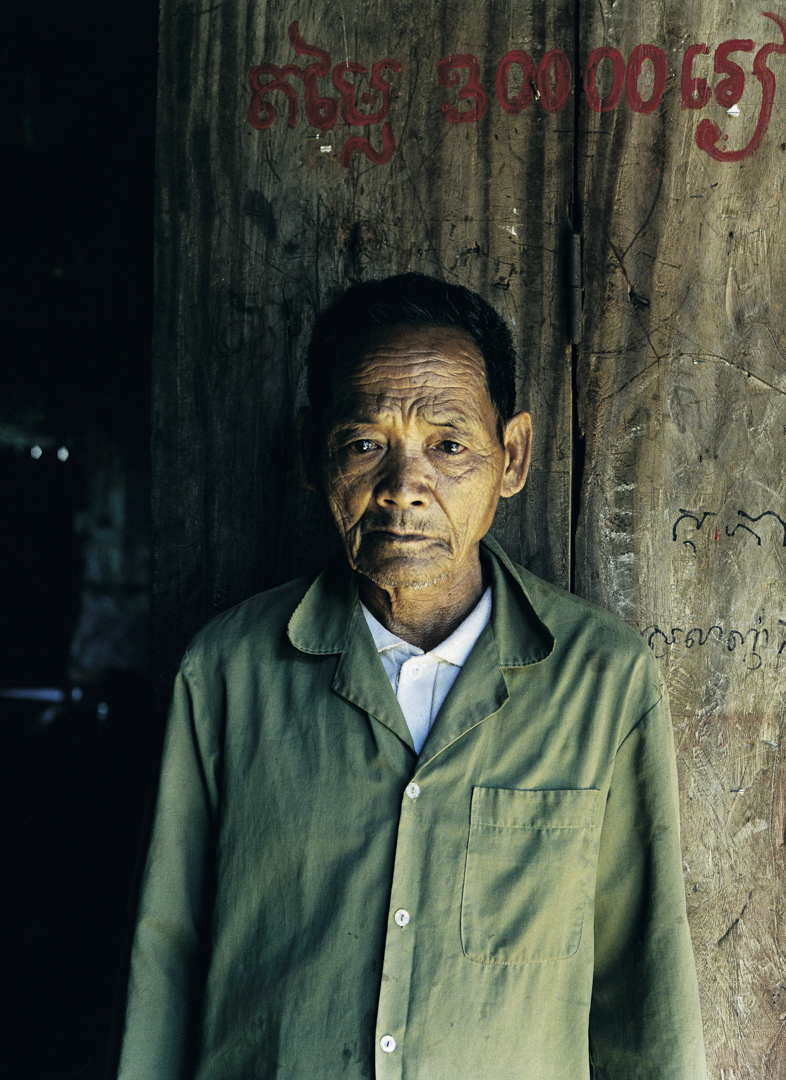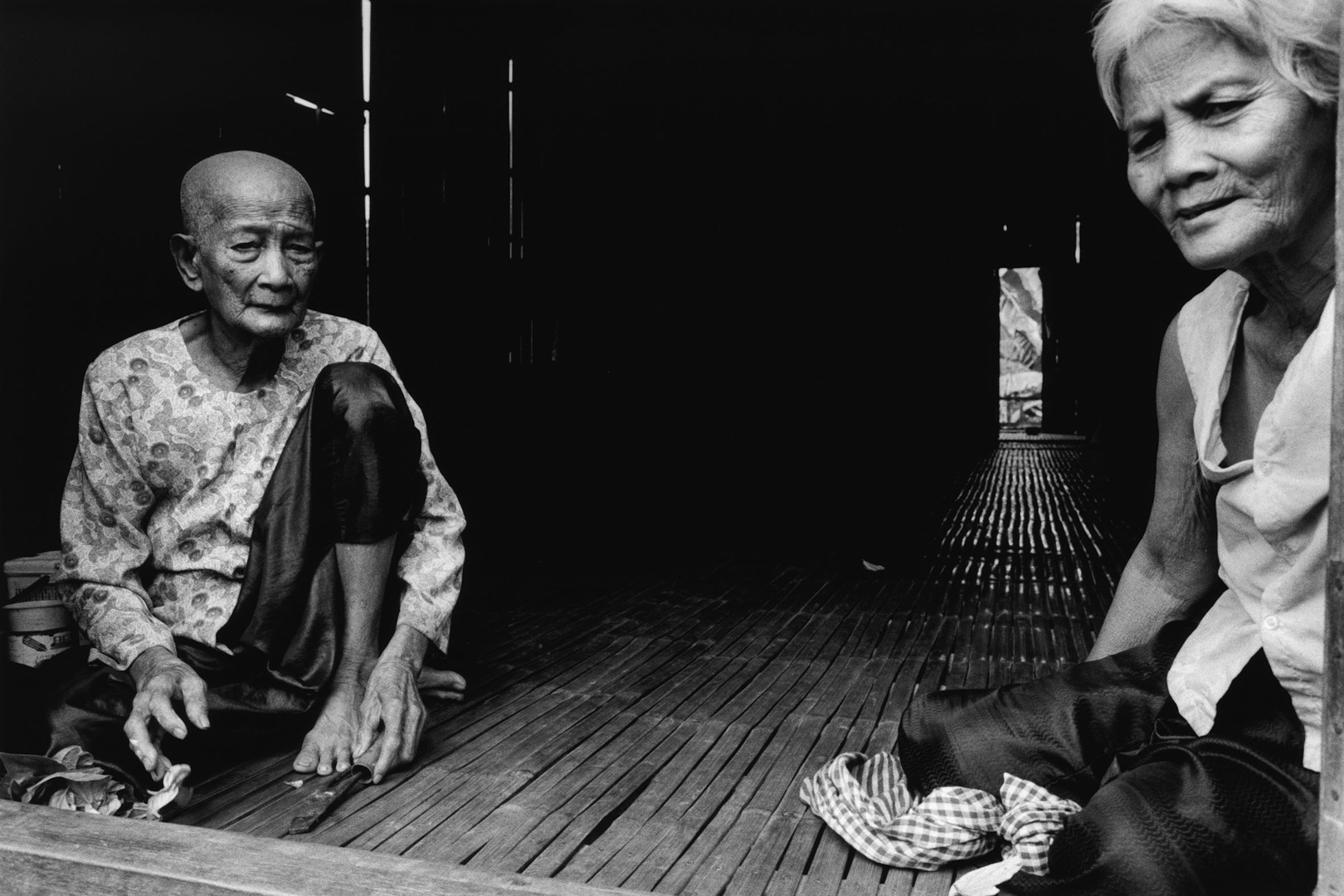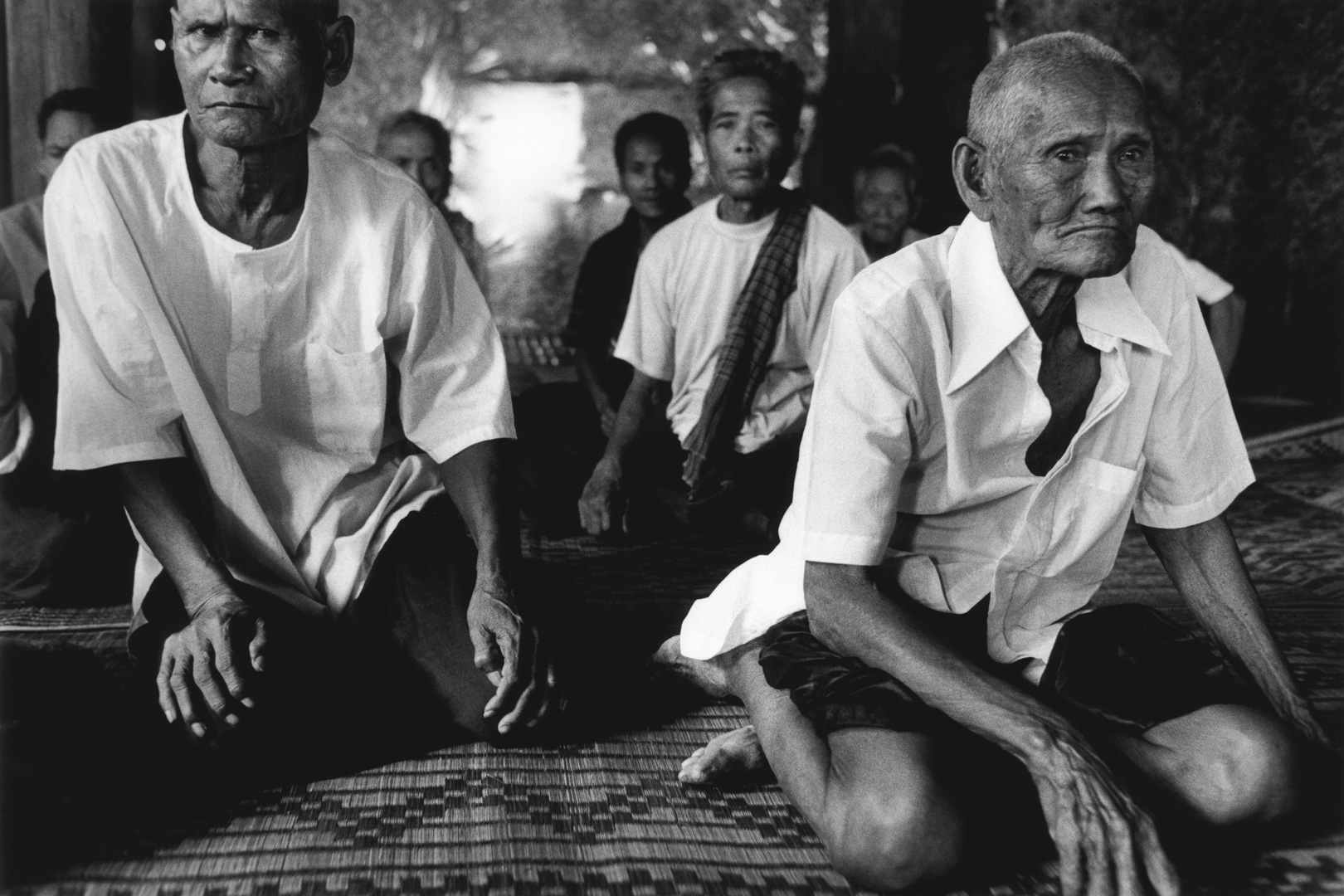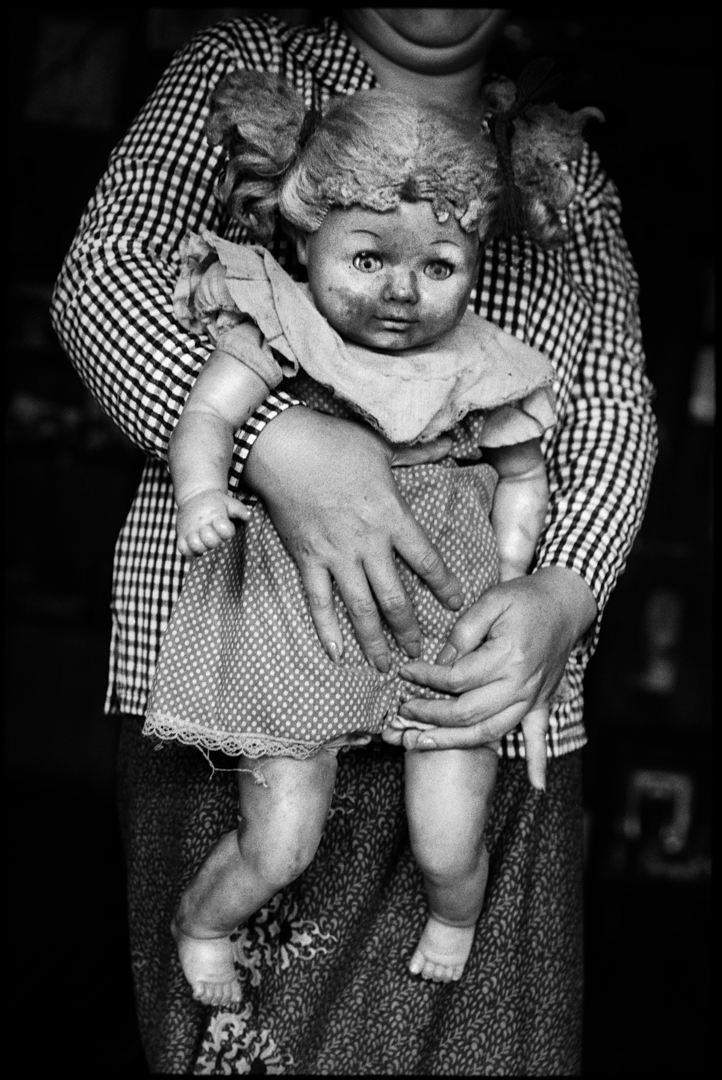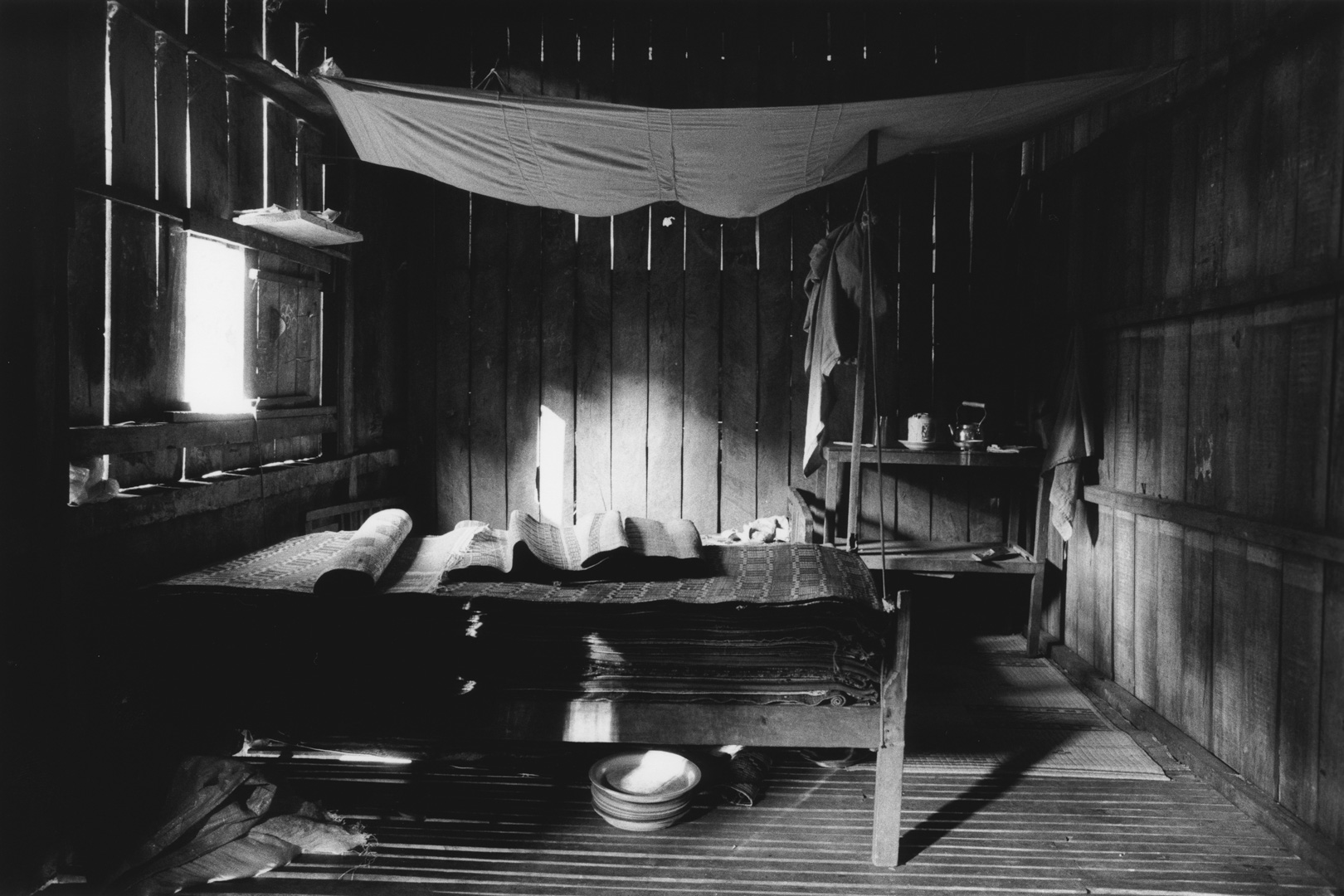The house and the swimming pool
“Our house was bombed par american forces. The park has disappeared, replaced by dense rows of rubber trees which did not make my search any easier. Arthur the elephant, birds and wild animals gave way to vultures. The other houses of the back-time suffered the same fate; some were squatted by displaced families. I feel the need to fix on negative all these cracks, bearing the stigmas of war and the outrages of the passing of time. I feel no melancholy when I look at these ruined houses. On the contrary, I appreciate that the squatters reappropriate my memories”. F.H.
The Mekong River
« To repeat the journey, made at the age of eight, on the Mekong river, I rent a sampan. It is identical to those of the time, but with an engine that replace advantageously the paddles of yesteryear. This Sampan belongs to Mrs. Tri. A woman of the river. Since the end of the “Khmers rouge years”, she carries in her sampan some building material, precious wood and rice. She prefers to navigate by day than by night because she is not safe from the pirates of the river (…) As the days go by, weariness invades me: I remain cloistered in the sampan, the villages wither away, the human forms disappear and nature, now omnipresent, becomes disturbing”. F.H
The village
“To reach Chi Tchean, the presumed location of the main camp where I was held prisoner, I hire the services of a fisherman who warns me that the area is not safe. I take a seat in a small unstable boat and go into the jungle (…) An hour later, we dock at Chi Tchean, a village made up of straw huts half in ruins (…) I don’t see any pagoda or school, the children don’t know their surnames and can’t read or write. A man in his seventies confirms to me that at the current location of Chi Tchean there used to be a huge camp, Issarak and Vietminh, then Khmer Rouge.
The region was bombed by the Americans and today remains entirely mined. Impossible to leave the village. The forest, which at the time was as dense as a jungle, has been totally dispossessed of its precious trees and even its soul. The place seems definitely cursed”. F.H
The pagoda
« The pagoda of Veal Molou, where I’ve been released, is located 3 kilometers from the Krek plantation. The young venerable Chin Rim is 25 years old and has the beauty of a young buddha. I show him an old picture of the pagoda and another one of the venerable Pak, the monk who set my brother and I free. The venerable Pak died in 1972. He was my father’s friend. Chin Rim is moved, he never knew him, but he knows everything about him and the story of these two child hostages which is passed on in the village like a legend from a generation to another.
He invites me to sit in the sala (the common room) and then brings in all the akas (Buddhist priests) and old people from the village. So, one by one, I do their portrait, a very classical portrait in front of a wooden door of the pagoda. I am not used to this kind of photographic process, but this time it allows me to engrave all these men and women in my memory. During the shooting, I take the time to scrutinize their faces as if I were trying to read in their eyes and in their wrinkles the history of Cambodia over the last fifty years”. F.H
The bedroom in the pagoda
« Night falls early. The sun sets over the rice fields, a light breeze rises. To honor me, adults and akas will spend the night in the sala. An old woman approaches me and leads me to a monastic room where there is a sideboard that will be used as a bed. Is this room of my childhood?” F.H.
